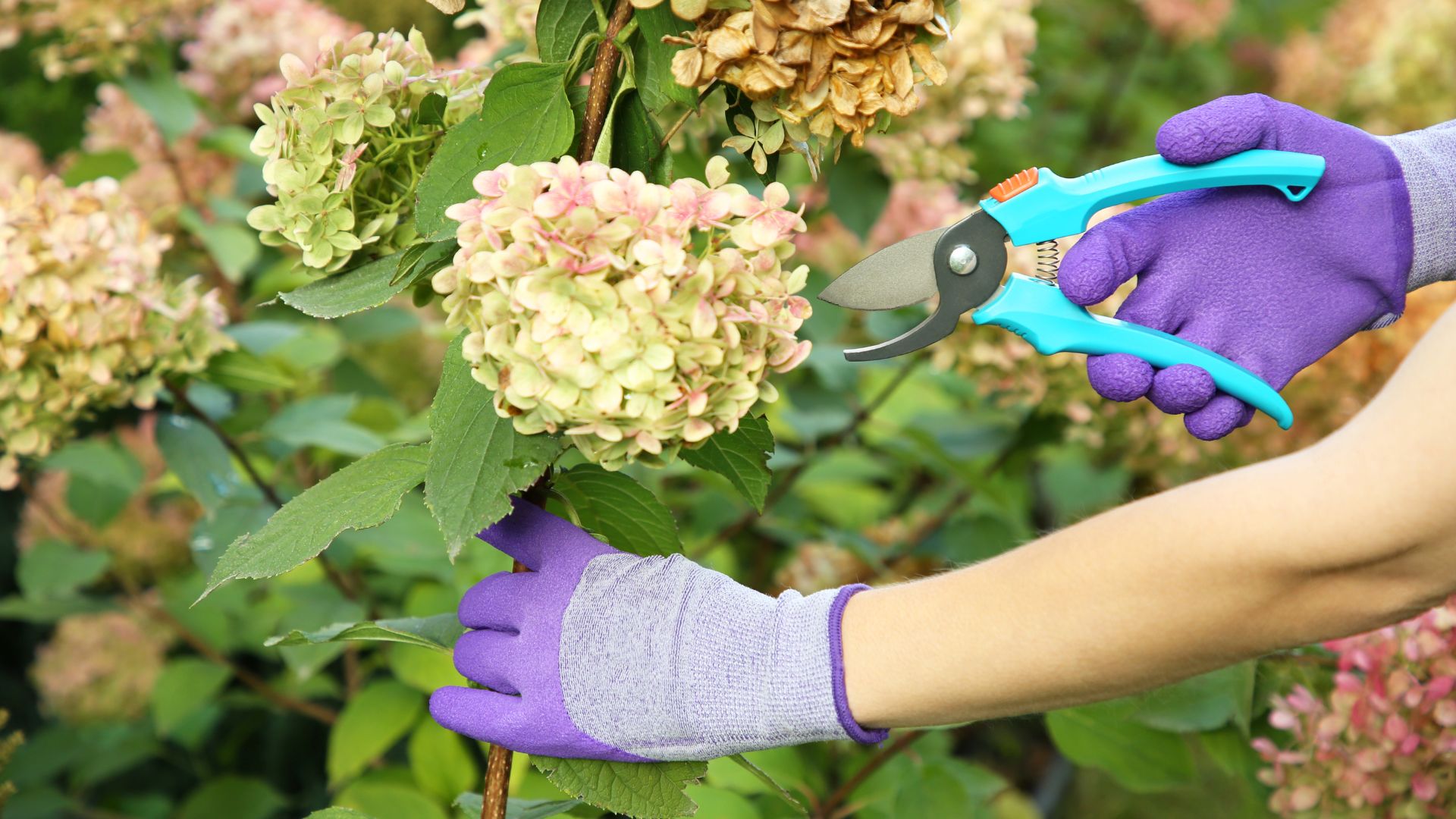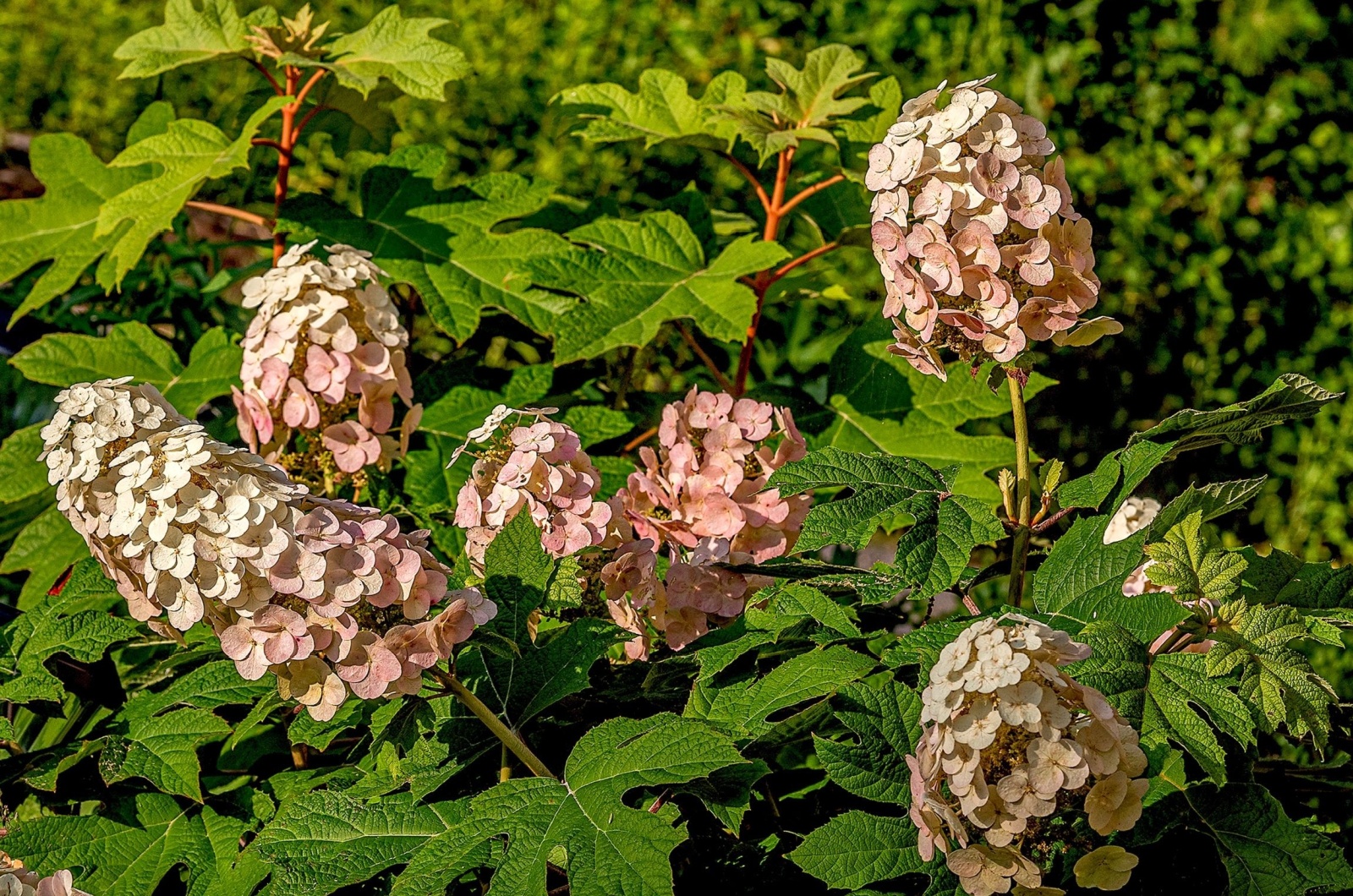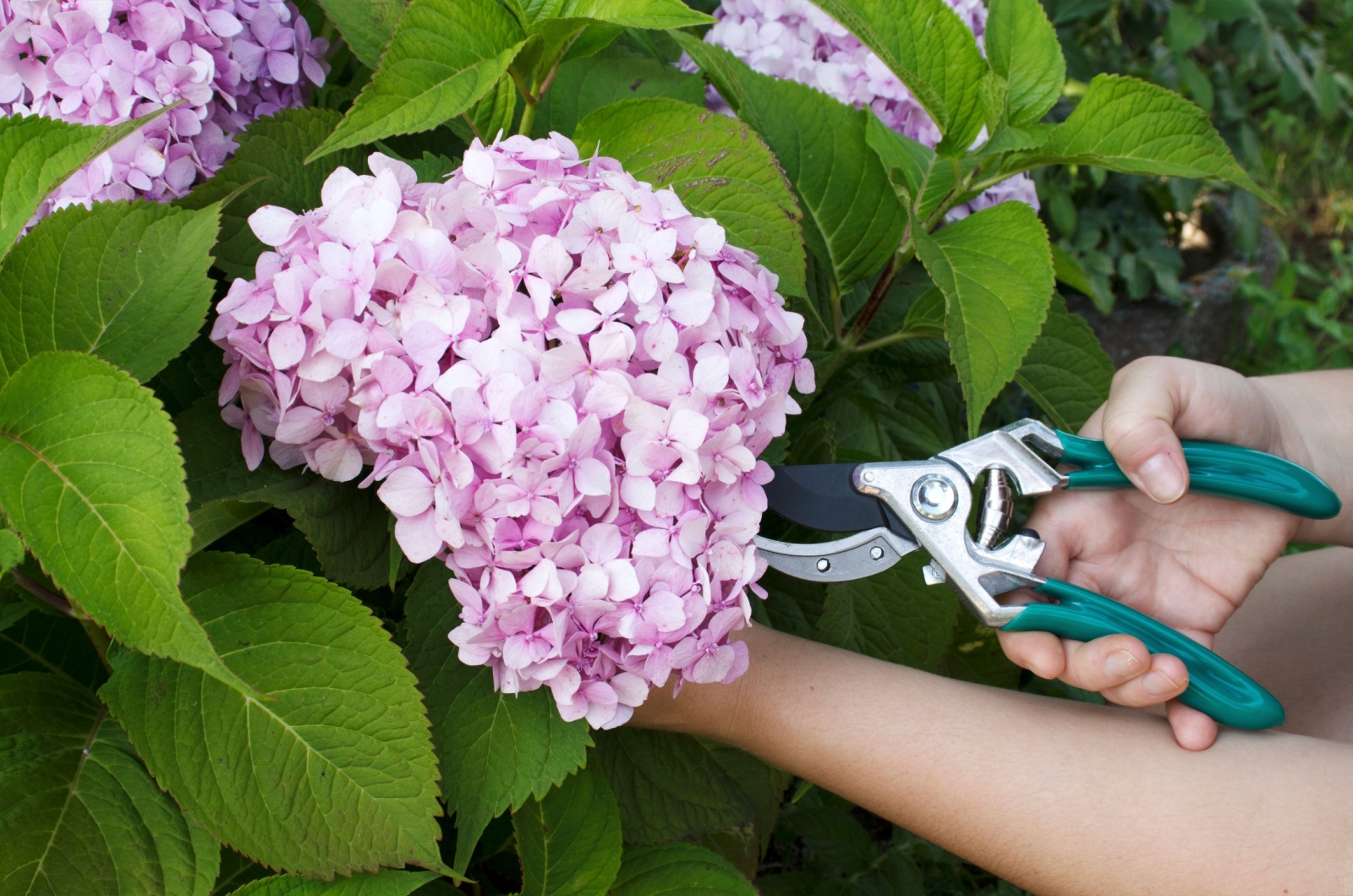Uh-oh, missed the hydrangea pruning window, didn’t we? I’ve been there more times than I’d like to admit!
One minute, you’re enjoying their full, beautiful blooms, and the next, you’re realizing it’s way past time to give them a good trim. Life gets busy, and sometimes gardening takes a backseat (guilty as charged).
But before you start panicking or apologizing to your plants – just relax and take a deep breath. Your hydrangeas aren’t as high-maintenance as you might think.
They’re pretty forgiving (trust me, I’ve pushed their limits more than once). But, the timing for pruning really depends on the type of hydrangea you have, so knowing your variety makes all the difference!
No need to stress – here’s everything you need to know about the perfect time to prune your hydrangeas (and what to do if you’ve missed that window).
It All Comes Down To The Type Of Hydrangea You Are Growing
We all know that hydrangeas love a good trim; however, we can’t prune them all at the same time.
This is because there are two types of hydrangeas that grow differently, and the right (or wrong) pruning can either make them thrive or set them back.
These two types I keep talking about are actually new wood hydrangeas and old wood hydrangeas.
So, before you reach for the pruners, let’s figure out what kind you’ve got!
New Wood Hydrangeas
These easy-going types (like panicles and smooth hydrangeas) don’t form their blooms until spring, which means you’ve got some wiggle room for pruning.
If you’re eager to tidy up those faded blooms and dead leaves during the winter, go for it. Or, if you tend to procrastinate like me, waiting until spring works too. Just make sure to prune before the first summer buds appear!
When you’re trimming, aim for about a foot above the ground. But don’t go overboard because pruning too close to the base might leave your hydrangeas feeling a bit too bare.
Old Wood Hydrangeas
Now, these guys are a little more picky. We’re talking about oakleaf, climbing, and big leaf hydrangeas here.
They bloom on last year’s growth (old wood), so if you prune them a bit later, you might accidentally chop off next year’s flowers. Yikes!
Their buds start forming in late summer, so your pruning window is short and sweet – right after the blooms have faded in summer is your best bet. If you wait too long, you might as well say goodbye to next year’s flowers right now.
Not sure if it’s too late to prune?
Try this trick: make a tiny cut into a stem. If it’s green, let it be. If it’s brown, go ahead and give it a trim.
This helped me a lot with pruning, especially when I was a beginner and didn’t know a thing about pruning hydrangeas.
Need more tips for taking care of hydrangeas in the fall? Check this out: 3 Important Fall Hydrangea Jobs & 2 Things You Shouldn’t Do
Simple Tips For Pruning Both Hydrangea Types
Pruning hydrangeas might seem tricky at first, but it all comes down to knowing whether you’ve got old wood or new wood hydrangeas. Once you figure that out, it’s pretty straightforward.
Here’s how to prune old wood:
1. Snip the spent blooms – clip off any dried or faded blooms to keep your plant looking fresh and tidy.
2. Check for dead stems – make a small cut into the stems. Green inside means it’s alive, brown means it’s dead.
3. Prune for shape – if your hydrangea is getting too tall or wide, this is your chance to trim it back to a manageable size. Just be careful not to chop too much.
Here’s how to prune new wood:
1. Clear out dead branches – just like with old wood, remove any branches that are brown inside. You can cut these down to the ground.
2. Trim for shape – these hydrangeas grow back every year, so a light trim to shape them up is fine.
3. Prune hard for growth – if you want bigger blooms and more growth, don’t be afraid to prune them back hard (down to about a foot above the ground). It might look drastic, but they’ll bounce back stronger than ever!
With these simple tips, your hydrangeas will be looking gorgeous year after year!




